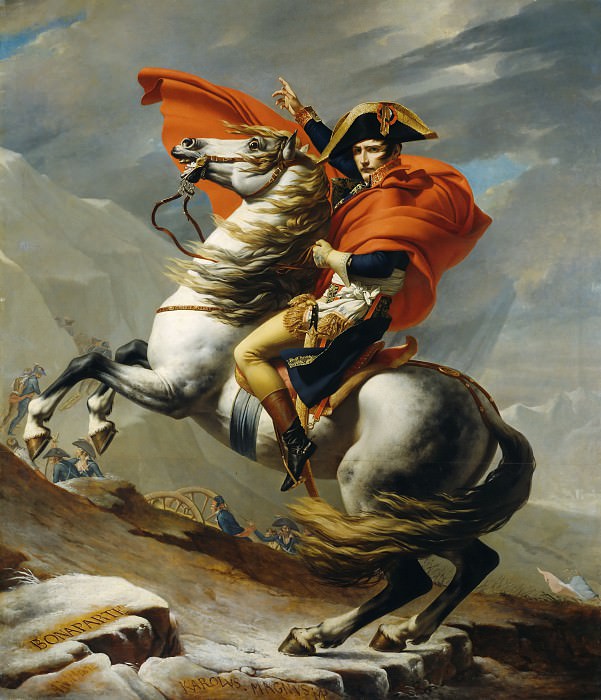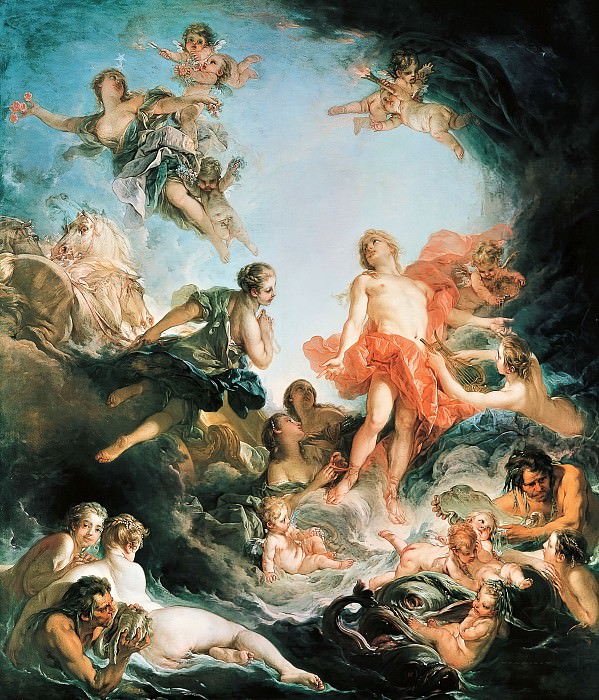Louise Bourgeois: An Exploration of Art and Emotion
Louise Bourgeois, a towering figure in the realm of contemporary art, is celebrated for her deeply personal and often provocative works that span a wide range of media. Her art, marked by a compelling fusion of psychological intensity and innovative form, reflects her profound engagement with themes of memory, trauma, and identity. Over a career that spanned more than seven decades, Bourgeois continually pushed the boundaries of artistic expression, creating pieces that are both visually striking and intellectually challenging.
Early Life and Influences
Born in Paris in 1911, Louise Bourgeois grew up in an environment steeped in the complexities of family dynamics and artistic heritage. Her father, a restorer of antique tapestries, and her mother, an artist in her own right, provided a backdrop of creativity and craftsmanship that would deeply influence her work. The domestic turbulence and emotional conflicts of her early years left a lasting imprint on her artistic practice, fueling the exploration of personal and collective unconscious themes that would define her career.
Bourgeois’s education in art began at the École des Beaux-Arts in Paris, where she studied from 1930 to 1932. Her formative years in Paris exposed her to the vibrant art scene of the time, including movements such as Surrealism and Abstract Expressionism. These influences, coupled with her own personal experiences, would later manifest in her art through a unique blend of abstraction and symbolism.
Artistic Evolution and Major Works
Louise Bourgeois’s artistic journey is marked by a continuous evolution of style and medium, reflecting her ever-evolving engagement with personal and social themes. In the early stages of her career, Bourgeois was known for her abstract paintings and drawings, which explored themes of geometry and form. However, it was her transition to sculpture in the 1940s that marked a significant turning point in her career.
One of Bourgeois’s most notable contributions to the art world is her series of sculptures known as the "Cells." These intricate installations, often comprising fragmented and repurposed materials, create enclosed spaces that evoke a sense of confinement and introspection. The "Cells" reflect Bourgeois’s interest in the psychological aspects of space and memory, inviting viewers to engage with the work on a deeply personal level.
Another seminal work in Bourgeois’s oeuvre is the "Maman" sculpture, a monumental spider that stands as both a tribute to her mother and a representation of the complex relationship between nurturing and fear. The sculpture, which has been exhibited in various locations worldwide, exemplifies Bourgeois’s ability to transform personal symbols into universal themes.
Themes and Symbolism
The thematic depth of Louise Bourgeois’s work is one of its most striking aspects. Central to her art is the exploration of memory and trauma, often drawing on her own experiences of family conflict and personal struggle. Bourgeois’s sculptures and installations frequently incorporate elements that evoke psychological and emotional states, such as the use of fabric, metal, and found objects.
Bourgeois’s use of the spider as a recurring motif in her work serves as a powerful symbol of both maternal care and the potential for harm. This duality reflects her complex relationship with her mother and her broader exploration of the dynamics of power and vulnerability. Similarly, her "Arch of Hysteria" sculpture, depicting a contorted figure, engages with themes of physical and emotional pain, capturing the intensity of human experience through its evocative form.
Legacy and Impact
Louise Bourgeois’s impact on the art world extends far beyond her own creations. Her pioneering approach to sculpture and installation has influenced numerous contemporary artists, and her work continues to be a point of reference in discussions about the intersections of art and psychology. Bourgeois’s exploration of personal trauma and identity paved the way for a broader understanding of how art can engage with complex emotional and psychological themes.
Bourgeois’s contributions to art were recognized through numerous awards and accolades throughout her lifetime, including the Golden Lion at the Venice Biennale in 1999. Her work is held in major collections worldwide, including the Museum of Modern Art in New York and the Centre Pompidou in Paris. Her legacy endures through the continued relevance of her themes and the innovative nature of her artistic practice.
Conclusion
Louise Bourgeois’s art remains a powerful testament to the capacity of creative expression to explore and communicate the depths of human experience. Her work, characterized by its emotional intensity and innovative use of materials, continues to captivate and challenge audiences around the world. As a pioneering figure in contemporary art, Bourgeois’s legacy is marked by her ability to transform personal pain into universal themes, making a profound impact on both the art world and the broader cultural landscape. Through her evocative and deeply personal works, Louise Bourgeois has left an indelible mark on the history of art, ensuring that her contributions will be remembered and celebrated for generations to come.
Louise Bourgeois, a towering figure in the realm of contemporary art, is celebrated for her deeply personal and often provocative works that span a wide range of media. Her art, marked by a compelling fusion of psychological intensity and innovative form, reflects her profound engagement with themes of memory, trauma, and identity. Over a career that spanned more than seven decades, Bourgeois continually pushed the boundaries of artistic expression, creating pieces that are both visually striking and intellectually challenging.
Early Life and Influences
Born in Paris in 1911, Louise Bourgeois grew up in an environment steeped in the complexities of family dynamics and artistic heritage. Her father, a restorer of antique tapestries, and her mother, an artist in her own right, provided a backdrop of creativity and craftsmanship that would deeply influence her work. The domestic turbulence and emotional conflicts of her early years left a lasting imprint on her artistic practice, fueling the exploration of personal and collective unconscious themes that would define her career.
Bourgeois’s education in art began at the École des Beaux-Arts in Paris, where she studied from 1930 to 1932. Her formative years in Paris exposed her to the vibrant art scene of the time, including movements such as Surrealism and Abstract Expressionism. These influences, coupled with her own personal experiences, would later manifest in her art through a unique blend of abstraction and symbolism.
Artistic Evolution and Major Works
Louise Bourgeois’s artistic journey is marked by a continuous evolution of style and medium, reflecting her ever-evolving engagement with personal and social themes. In the early stages of her career, Bourgeois was known for her abstract paintings and drawings, which explored themes of geometry and form. However, it was her transition to sculpture in the 1940s that marked a significant turning point in her career.
One of Bourgeois’s most notable contributions to the art world is her series of sculptures known as the "Cells." These intricate installations, often comprising fragmented and repurposed materials, create enclosed spaces that evoke a sense of confinement and introspection. The "Cells" reflect Bourgeois’s interest in the psychological aspects of space and memory, inviting viewers to engage with the work on a deeply personal level.
Another seminal work in Bourgeois’s oeuvre is the "Maman" sculpture, a monumental spider that stands as both a tribute to her mother and a representation of the complex relationship between nurturing and fear. The sculpture, which has been exhibited in various locations worldwide, exemplifies Bourgeois’s ability to transform personal symbols into universal themes.
Themes and Symbolism
The thematic depth of Louise Bourgeois’s work is one of its most striking aspects. Central to her art is the exploration of memory and trauma, often drawing on her own experiences of family conflict and personal struggle. Bourgeois’s sculptures and installations frequently incorporate elements that evoke psychological and emotional states, such as the use of fabric, metal, and found objects.
Bourgeois’s use of the spider as a recurring motif in her work serves as a powerful symbol of both maternal care and the potential for harm. This duality reflects her complex relationship with her mother and her broader exploration of the dynamics of power and vulnerability. Similarly, her "Arch of Hysteria" sculpture, depicting a contorted figure, engages with themes of physical and emotional pain, capturing the intensity of human experience through its evocative form.
Legacy and Impact
Louise Bourgeois’s impact on the art world extends far beyond her own creations. Her pioneering approach to sculpture and installation has influenced numerous contemporary artists, and her work continues to be a point of reference in discussions about the intersections of art and psychology. Bourgeois’s exploration of personal trauma and identity paved the way for a broader understanding of how art can engage with complex emotional and psychological themes.
Bourgeois’s contributions to art were recognized through numerous awards and accolades throughout her lifetime, including the Golden Lion at the Venice Biennale in 1999. Her work is held in major collections worldwide, including the Museum of Modern Art in New York and the Centre Pompidou in Paris. Her legacy endures through the continued relevance of her themes and the innovative nature of her artistic practice.
Conclusion
Louise Bourgeois’s art remains a powerful testament to the capacity of creative expression to explore and communicate the depths of human experience. Her work, characterized by its emotional intensity and innovative use of materials, continues to captivate and challenge audiences around the world. As a pioneering figure in contemporary art, Bourgeois’s legacy is marked by her ability to transform personal pain into universal themes, making a profound impact on both the art world and the broader cultural landscape. Through her evocative and deeply personal works, Louise Bourgeois has left an indelible mark on the history of art, ensuring that her contributions will be remembered and celebrated for generations to come.















